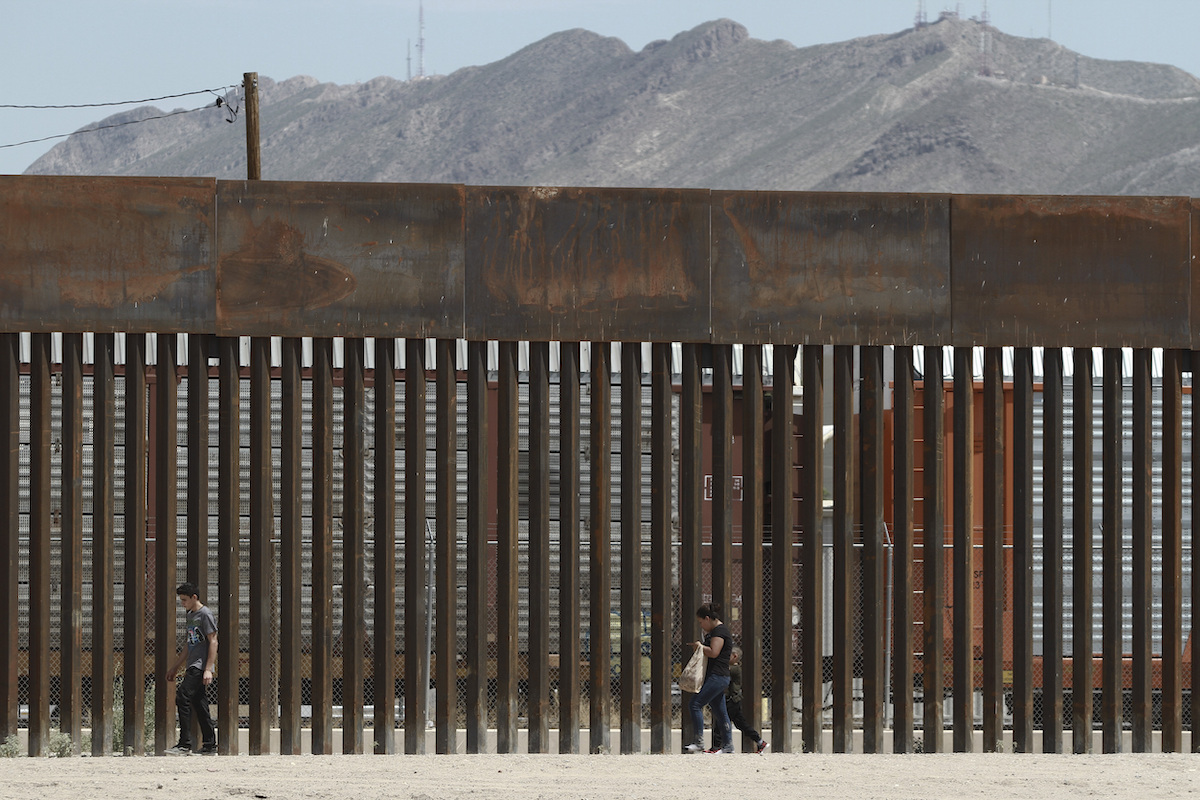

A border wall set back from the geographical border, in El Paso, Texas, as seen from Ciudad Juárez, Mexico. (AP Photo/Christian Chávez)
By COLLEEN LONG and CEDAR ATTANASIO, Associated Press
WASHINGTON (AP) — A top U.S. Border Patrol official has a warning: The crisis at the U.S.-Mexico border is not over.
Even though crossings have been down over the past few months and news of custody deaths and teeming facilities full of children and families has faded from front pages and talking points of politicians, the number of migrants coming over border is still high. And resources are still stretched.
“It is kind of a new norm. We’re at risk at any time,” if some recent deterrent efforts are blocked by the courts, like a policy forcing asylum seekers to wait out their claims in Mexico , Brian Hastings, chief of law enforcement operations at Border Patrol said in an interview with The Associated Press.
“We will go back, mark the words, we will go back to the crisis level that we had before.”
Immigration has been a top issue since President Donald Trump took office almost three years ago, with Democrats heavily critical of his administration on border conditions. But Washington is now dominated by talk of impeachment and immigration seems somewhat less pressing, with monthly apprehension numbers declining and Mexico and other nations enhancing cooperation with the U.S. on immigration issues.
Still, Trump has not forgotten an issue that was key to his 2016 victory, pointing to it often at public events and at rallies. And as he ramps up his campaign heading into 2020, he’s likely to invoke it often as a measure of his success, telling his supporters that construction is happening on the long-stalled wall he promised along the southern border and that far fewer people are being apprehended crossing the border illegally — if current numbers hold, that is.
Over the budget year that ended Sept. 30, there were 859,510 apprehensions by Border Patrol, plus over 110,000 more encounters of people who tried to enter legally but were deemed inadmissible. There were nearly 1 million crossings from the early 2000s, but those were mostly single men from Mexico who were easily returned, not families from Central America who require much more care.
While the numbers surged, Homeland Security agents and officers were overwhelmed by the number of families crossing the border as the numbers continued to rise. Families with small children require much more care.
Border officers pleaded for help but it wasn’t until over the summer, when reports of squalid conditions and surging numbers of detainees and children dying were published that Congress authorized additional funding to increase capacity. That funding expired at the end of the fiscal year.
There were more than 200 large groups of more than 100 migrants dropped off by smugglers in remote areas —something that can shut down an entire station for the day for processing— and there were at least 140,000 people who evaded capture.
Previously, 2014 was considered a crisis year, when the Obama administration saw a crush of unaccompanied children at the border. The overall apprehensions by Border Patrol were 479,371; there were 372,000 more in 2019.
Border agents saw more families crossing the border in the month of May this year than the entire budget year of 2014. In 2014, there were about 68,000 families for the entire budget year compared to 84,000 in May 2019 alone.
There were more than 4,900 people rescued including a dramatic increase in river rescues—742 from 86 the year before.
“I am incredibly proud of the agents,” Hastings said. “They have been vilified, but they deserve to be thanked because we have never, ever dealt with anything like this before.”
Hastings said the so-called remain in Mexico program that is expanding in parts of California and Texas, plus a new rule barring asylum to those who pass through a third country, and crackdowns by Mexico at its own southern border have helped. More than 55,000 people have been turned back , and officials say many have gone home.
The program won’t be extended into the Arizona border right now, Hastings said, because officials are focused on increasing the number of people returned in the areas where it is already in place. And he’s seen Mexico crack down before, but “we’ve never seen them sustain for that long.”
Still, Hastings has said the number of immigration officials reassigned to the border has gone down, as more agents and officers go back to their regular jobs.
The Border Patrol is looking to create a civilian workforce to help agents with some non-law enforcement duties, he said.
***
Attanasio reported from El Paso, Texas. Associated Press Writer Jill Colvin contributed to this report.


